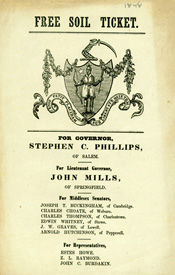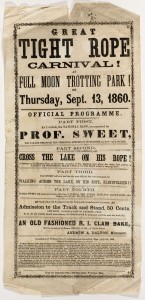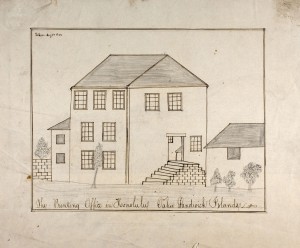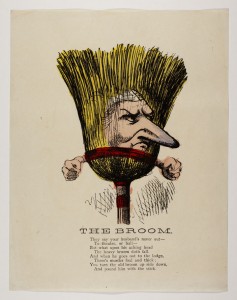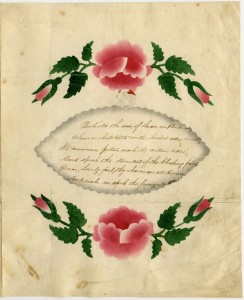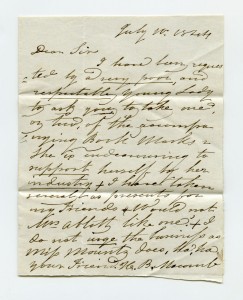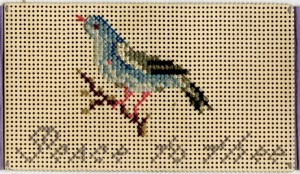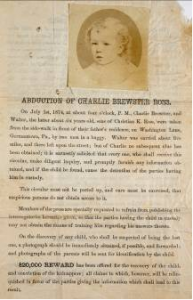
Abduction of Charlie Brewster Ross. Philadelphia: Wm. F. Murphy’s Sons, 1874. This broadside is an early example of the use of photography on public posters. Allan Pinkerton, founder of the famous Pinkerton Detective Agency, invented the photographic mug shot; during the 1860s and early 1870s, he often used small albumen photos on wanted posters for ...

